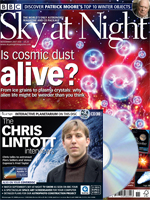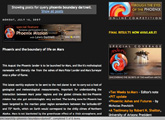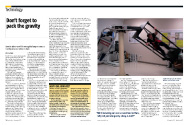A Living Mars?
 The possibility of a living Mars is deeply ingrained in popular culture. The observations of the astronomer Percival Lowell, and his interpretation that these canals were built to channel melt-water from the polar regions down to the dying cities and farms huddled around the equator, are well known. Even into the 1960s, textbooks were being published that explained the temporal variation in surface brightness as due to the seasonal spread of vegetation. Martians are the science-fiction writer’s alien invader of choice, from the heat-ray-wielding tripods of H.G. Wells to the bulbous-headed aggressors of Tim Burton’s 1996 filmMars Attacks. With the armada of robotic probes currently orbiting and roving across the red planet, Mars has never been so fore-front in the public eye. Much of this interest is focussed on the possibility that our planetary neighbour has supported an independent genesis of life, and that in certain regions it may remain habitable even to this day. In this feature article, a selection of some of the most recent results and discoveries concerning the astrobiological potential of Mars will be discussed.
The possibility of a living Mars is deeply ingrained in popular culture. The observations of the astronomer Percival Lowell, and his interpretation that these canals were built to channel melt-water from the polar regions down to the dying cities and farms huddled around the equator, are well known. Even into the 1960s, textbooks were being published that explained the temporal variation in surface brightness as due to the seasonal spread of vegetation. Martians are the science-fiction writer’s alien invader of choice, from the heat-ray-wielding tripods of H.G. Wells to the bulbous-headed aggressors of Tim Burton’s 1996 filmMars Attacks. With the armada of robotic probes currently orbiting and roving across the red planet, Mars has never been so fore-front in the public eye. Much of this interest is focussed on the possibility that our planetary neighbour has supported an independent genesis of life, and that in certain regions it may remain habitable even to this day. In this feature article, a selection of some of the most recent results and discoveries concerning the astrobiological potential of Mars will be discussed.
Download pdf
Read on Geology Today










